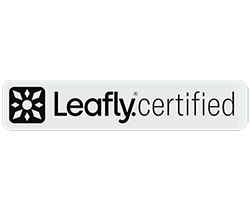Most jurisdictions that allow usable whole-flower marijuana to be sold also require the product to be tested for its moisture content. The moisture content in cannabis flower is defined as the percentage of water that is present in a given sample. When required, cannabis moisture testing is conducted by a certified laboratory who will ensure that the product meets any specification requirements. Many states have placed a threshold requirement that cannabis flower may not contain more than 15% moisture.
Why is Moisture Testing Important for Cannabis & Hemp Material?
Understanding the moisture content of cannabis and hemp flower is important for several reasons, some of which include the smokability of the material and the potential for the material to experience microbial growth and molding. As such, cannabis moisture testing becomes an imperative part of the testing process as it provides clear information on the moisture content that exists in the material. The ideal moisture range for cannabis flower material is between 5% and 9%, however, some cannabis may have a moisture content that is lower or higher than that depending on the growing environment and curing process.
Additionally, cannabis moisture testing allows the producers to assess their internal processes to better understand how the flower is drying during curing. By determining how much moisture is present, the laboratory can help a cultivator understand how long the flower should be cured for to reach the ideal moisture content, while still maintaining the integrity and quality of the product.
How do Laboratories Conduct Cannabis Moisture Testing?
There are several techniques that laboratories can use for determining the moisture content in cannabis and hemp flower. Some of which include:
- Loss on Drying (LoD): This technique involves heating a sample to a specific temperature to remove the water and then calculating the moisture content based on the weight of material that was lost during the drying process.
- Vacuum Oven (VO): This technique uses a vacuum oven at a low temperature to slowly evaporate the water from a sample. Once all water has been evaporated, the percent moisture content is determined based on the amount of weight lost during the testing process.
- Karl Fischer (KF): This technique involves performing a titration on the sample to determine the amount of water present based on the reaction that occurs. The moisture content is calculated based on the endpoint of the reaction.
- Vacuum Desiccation (VD): This technique involves using a vacuum pump and desiccant to remove all water while keeping the sample stored at room temperature. Once all of the water has been removed, the moisture content is determined by calculating the weight lost during the desiccation process.
Since there are several different techniques for determining moisture content in cannabis and hemp, the results obtained by laboratories may differ based on the methodology being utilized. As such, it is important for producers to understand each technique and the way that the cannabis flower can impact the results being obtained. Cannabis is known to have a high concentration of volatile and semi-volatile compounds that can be degraded when determining moisture content if heat is used in the process. Therefore, results where heat is utilized may be skewed high due to additional weight being accounted for that is not truly water.

How Does Moisture Content Impact the Flower Material?
There are many ways that the moisture content in cannabis flower can impact the material, some of which include:
- Product Quality: The smokability and quality of cannabis flower can be affected by the moisture content. When the product contains too much water, the flower will not smoke as well, similar issues occur when the product is too dry. As such, producers aim to sell cannabis flower that falls within the ideal range of 5% to 9% moisture.
- Microbial Growth: The amount of water in a sample can impact the product’s ability to experience microbial growth. When the cannabis flower is overly moist, it creates an environment that may allow for mold to grow on the product. This microbial growth can directly impact product testing, as most states are requiring laboratories to test the cannabis flower for various types of yeasts and molds.
- Cannabinoid and Terpene Content: In the same sense that cannabis flower can be impacted negatively when it is too wet, the same can occur when the flower is too dry. Majority of the cannabinoids and terpenes that are present in cannabis flower are stored in the trichomes of the product. When the moisture content is too low, the trichomes become brittle and can fall off the flower before packaging, thus resulting in a lower cannabinoid and terpene concentration in the final product that is being sold.
- Product Shelf Stability: The amount of time that it takes for cannabis flower to spoil can be directly correlated to the amount of moisture and humidity that the product is exposed to. Therefore, when the cannabis flower has a moisture content outside of the ideal range, it is more susceptible to having a decreased shelf life.
Cannabis Moisture Testing in Florida
Florida law requires Certified Marjuana Testing Laboratories (CMTLs) to test for moisture content in all cannabis flower (whole flower, prerolls, and kief) being sold to patients. When testing for moisture, laboratories must ensure the water content in the sample is less than 15%. If a product contains more than 15% moisture, the laboratory must fail the product. At Modern Canna, we offer this service as part of our standard compliance panel and provide producers with the most accurate cannabis moisture result possible. To learn more about our other cannabis testing service, click here or reach out to us directly for more information!


